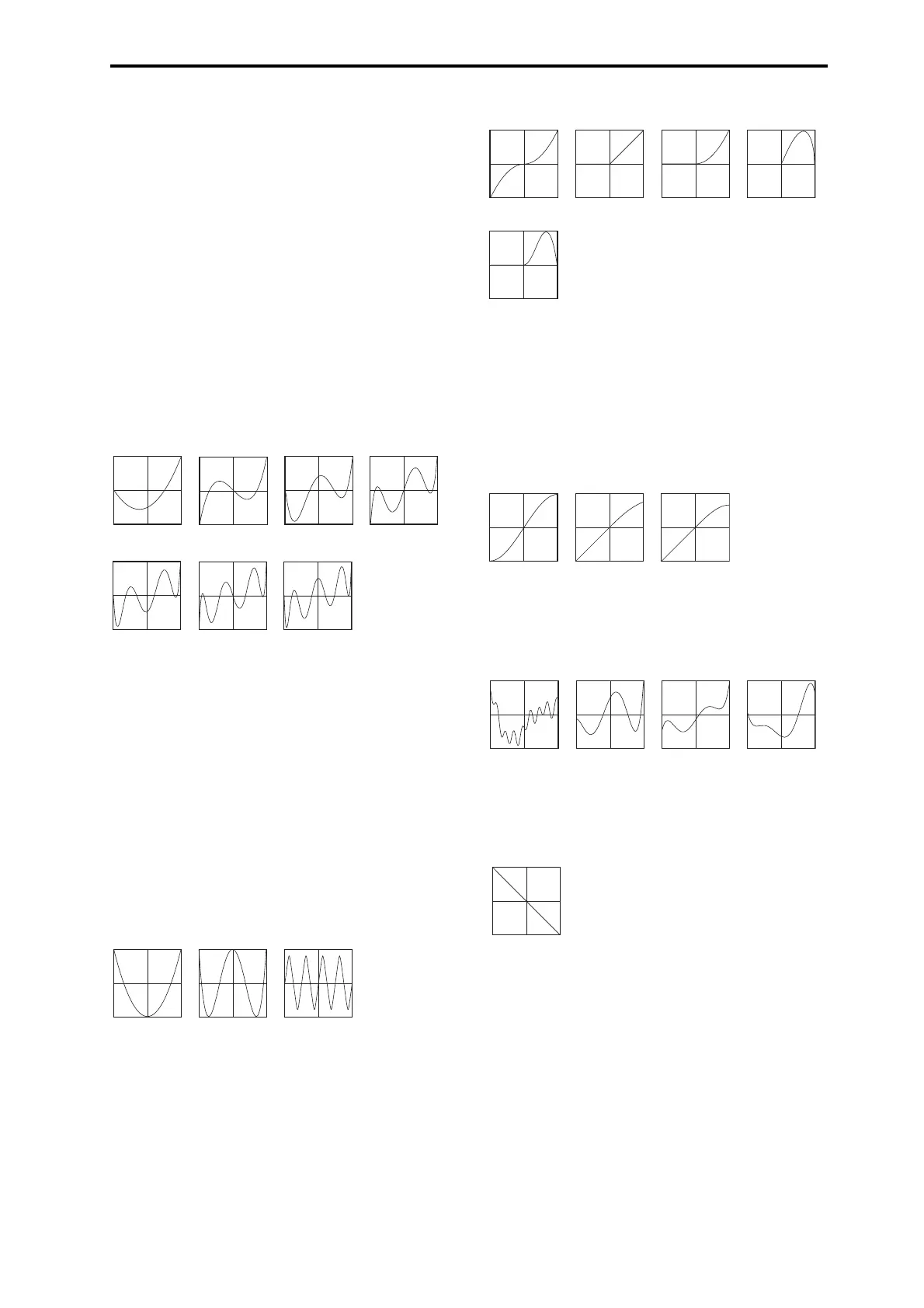PROGRAM > MOD-7: Oscillator 5–4: VPM Osc1
329
Add 1Plus3: This produces the fundamental plus the 3rd
harmonic at equal amplitude, and sounds like an 8’ + 2 2/3’
organ stop.
Add 1Plus4: This produces the fundamental plus the 4th
harmonic at equal amplitude, and sounds like an 8’ + 2’
organ stop.
Add 1Plus5: This produces the fundamental plus the 5th
harmonic at equal amplitude, and sounds like an 8’ + 1 3/5’
organ stop.
Add 1Plus6: This produces the fundamental plus the 6th
harmonic at equal amplitude, and sounds like an 8’ + 1 1/3’
organ stop.
Add 1Plus7: This produces the fundamental plus the 7th
harmonic at equal amplitude.
Add 1Plus8: This produces the fundamental plus the 8th
harmonic at equal amplitude, and sounds like an 8’ + 1’
organ stop.
Multipliers
Sine Octave: With full-scale sine input, this produces a sine
wave one octave higher than the input, and clips above 0 dB.
Sine 2Octave: With full-scale sine input, this produces a
sine wave two octaves higher than the input signal. With
decreasing Drive settings, it jumps down to the original
octave–producing an interesting effect when Drive is
modulated. More complex input signals can also produce
good results.
Triangle4: This is similar to Sine4, except that it uses a
triangle shape. It produces output similar to a simple FM pair
with the Carrier:Modulator ratio set to 0:1, and the carrier set
to a triangle wave. Drive functions like the FM input level,
and responds well to AMS modulation. With full-scale input,
Drive settings over 0dB will cause clipping.
TX Waves
TX Wave 2, 3, 4, 7, and 8: With full-scale sine input, these
produce waveforms similar to those of classic 4-operator FM
synths. Modulate Drive below 0dB for a more sine-like
sound.
Tube and Diode
Tube: This is a soft-clipping table, for simulating analog
saturation. The combination of input level and Drive
controls the amount of clipping; Offset controls symmetry,
like DC offset into a VCA.
Diode 1 and 2: These produce asymmetric soft-clipping,
like an analog diode. Diode 2 produces more distortion than
Diode 1.
Mixture
Mixture 1, 2, 3, and 4: With sine wave input, these four
tables create a bunch of different harmonics at different
amplitudes, like FM or organ stops.
Invert
Invert: This table simply inverts the input signal. It can be
used to invert a waveform prior to adding it back to itself–
for pulse width modulation, for example.
Fuzzy
Fuzzy: This table adds random-sounding noise to the input,
even with low input levels. Modulating Drive can produce
interesting, grungy effects.
Fuzzy Tube: This is similar to Fuzzy, above, with the
addition of soft clipping.
Get Fuzzy: This unusual table is noisy only around zero.
High-level input signals (or high Drive settings) will
produce less noisy output, while low-level signals will be
much more noisy.
Add 1plus2 Add 1plus3 Add 1plus4 Add 1plus5
Add 1plus6 Add 1plus7 Add 1plus8
Sine Octave Sine 2Octave Triangle4
TX Wave 2 TX Wave 3 TX Wave 4 TX Wave 7
TX Wave 8
Mixture 1 Mixture 2 Mixture 3 Mixture 4

